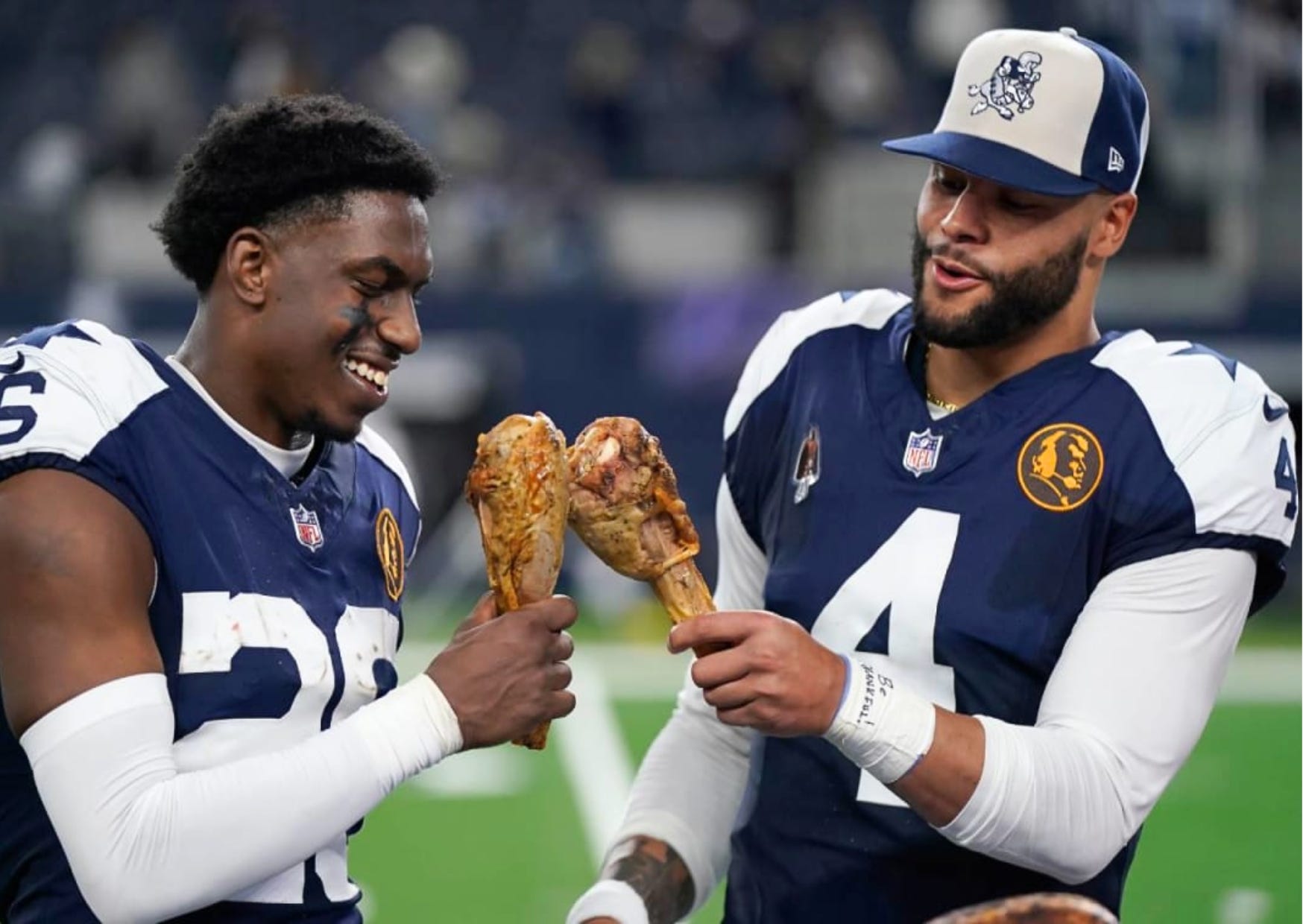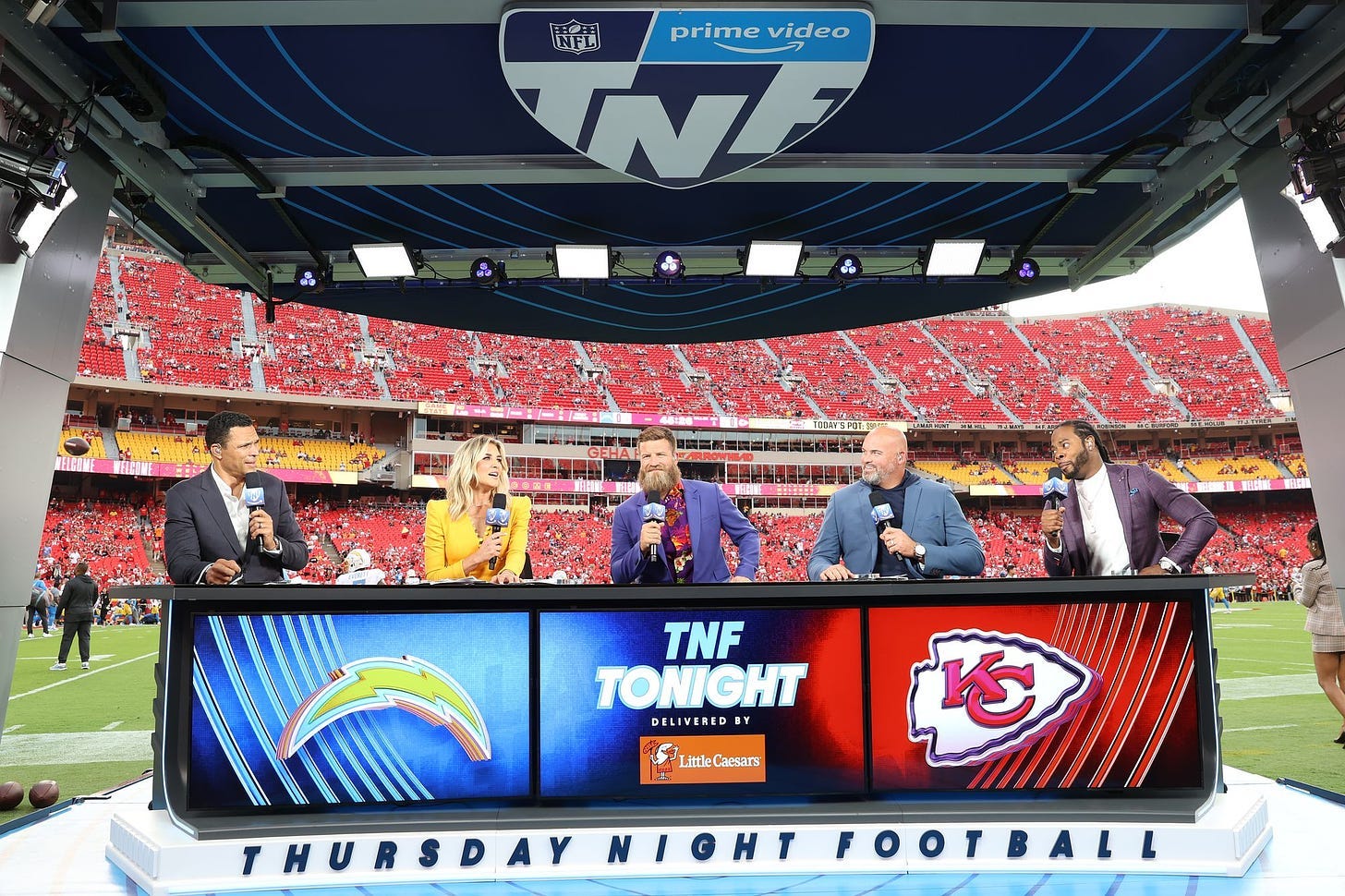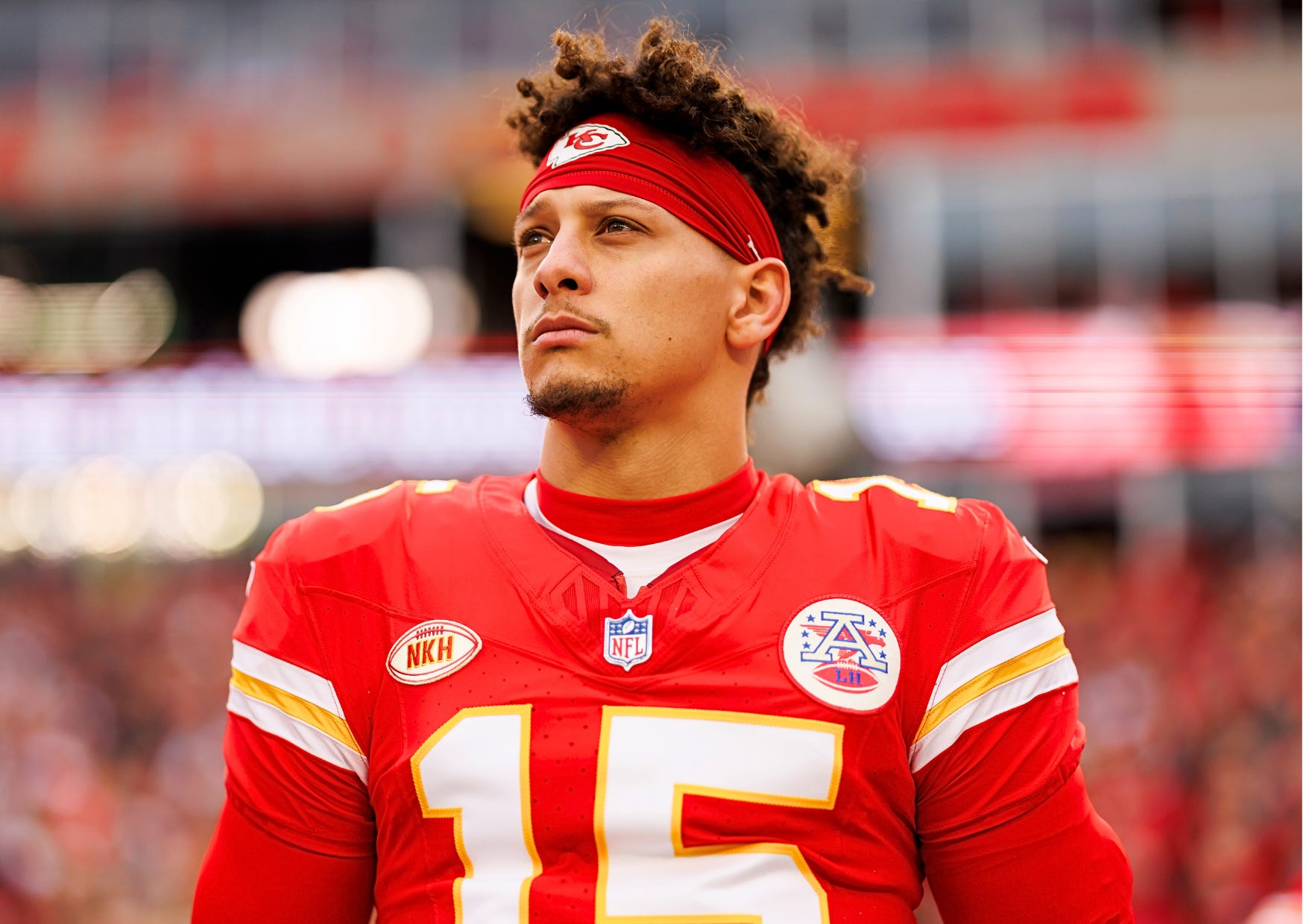Inside Amazon’s $100 Million Plan To Turn NFL Fans Into Black Friday Shoppers
Inside Amazon’s $100 Million Plan To Turn NFL Fans Into Black Friday ShoppersAmazon’s in-game advertising platform will allow NFL viewers to see deals, add products to their Amazon carts, and checkout, all without ever leaving the broadcast.
The Dallas Cowboys hospitality staff is hard at work this week. Rather than the standard hot dogs and popcorn served at most NFL stadiums on gameday, Cowboys fans will enjoy a different kind of spread when the Giants come to town this week. Over 13,000 pounds of Turkey. 5,400 pounds of ham. 310 gallons of gravy. And enough cornbread, green beans, and pecan pie to satisfy all the stadium’s luxury suite guests. This isn’t just one of Jerry Jones’ favorite meals; it’s Thanksgiving in the NFL. The NFL and Thanksgiving go hand-in-hand. In fact, the NFL has always played football on Thanksgiving, hosting six Turkey Day games during its first season in 1920. This tradition then expanded in 1934 when the Detroit Lions used the holiday to drum up interest for their recently-relocated franchise, with 26,000 fans showing up in Detroit to watch the back-to-back world champion Chicago Bears play the Lions. Not one to avoid attention, the Dallas Cowboys saw the fan reaction in Detroit and decided to join the party 32 years later. Dallas Cowboys General Manager Tex Schramm even got the NFL to guarantee gate revenue, as it was no certainty that fans outside of Detroit would want to leave their house on Thanksgiving to watch football. However, the Cowboys didn’t need the NFL to backstop its losses. More than 80,000 fans showed up to see the Cowboys at the Cotton Bowl, and a new tradition was born. The Detroit Lions and Dallas Cowboys are now grandfathered in as home teams on Thanksgiving Day, hosting a home game nearly every year for the last 75+ years. The Lions always get the early window while the Cowboys play later in the day, rotating through opponents that have most frequently included the Bears and the Packers. The NFL has kept this tradition alive because it is incredibly popular. Last year’s three Thanksgiving Day NFL games brought in 133 million viewers, the second-highest Thanksgiving Day total audience on record. That included 33 million viewers for the Packers-Lions game early in the day and another 42 million for the Cowboys-Commanders in the afternoon — the highest-rated regular season game last year. These numbers are impressive for the NFL, but they are even more impressive when compared to other U.S. sports leagues, like the NBA, which averaged fewer viewers for all five of its Christmas Day games last year combined (5M) compared to the NFL’s least-watched 2023 Thanksgiving Day game — the 49ers and Seahawks at 27 million. But now the NFL has taken it a step further. With Commissioner Roger Goodell and the league’s 32 owners trying to reach a goal of $25 billion in annual revenue by 2025, the NFL sold its first-ever Black Friday game to Amazon last year for $100 million. The NFL’s first-ever Black Friday game was a surprise. Not necessarily because the NFL was adding another primetime game to its schedule, but because it was long-believed that the Sports Broadcasting Act of 1961 prohibited it from happening. The Sports Broadcasting Act of 1961 is a law that allows the NFL to pool its TV rights into a single entity instead of requiring NFL teams to secure their own TV deals. This antitrust exemption helped small-market NFL teams survive, and it’s the same media rights model that the league uses today. But Congress knew that allowing the NFL to package its media rights into one entity might create a monopoly, so they added an exemption window to protect high school and college football, essentially saying that the NFL couldn’t hold games on Fridays and Saturdays during the fall. However, the devil is in the details. When you read through the Sports Broadcasting Act of 1961, the legal language is incredibly specific, explicitly stating that the NFL can’t hold games between 6 p.m. on Fridays to midnight on Saturdays from the second Saturday in September to the second Saturday in December each football season. So, the NFL circumvented the Sports Broadcasting Act of 1961 by hosting its first-ever Black Friday game at 3 p.m. — three hours before the exemption window starts. It’s easy to see why this is good for the NFL — they get $100 million and another large viewership number — but it could be even bigger for a streaming partner like Amazon. Amazon has bought a ton of premium sports rights over the last few years and clearly sees sports as a way to attract new Prime members and reduce churn. A good example of this is that Amazon’s first-ever Thursday Night Football game attracted more Prime signups than any other three-hour period in the company’s 30-year history. However, Black Friday takes this one step further. Unlike Amazon’s Thursday Night Football broadcast, which requires a Prime subscription to watch, the online retailer makes its Black Friday games free to watch for anyone willing to submit their email. This will help the company convert more football fans into subscribers, and Amazon will also make a chunk of its $100 million investment back through advertising deals, with 30-second in-game advertising spots selling for $650,000 to $750,000 this year. Huddle Up is a reader-supported publication. To receive new posts and support my work, consider becoming a free or paid subscriber. But let’s be honest: Amazon isn’t expecting this game to be profitable based on advertising alone. The real test is to see if they can use the NFL’s extremely popular content platform to convert traditional brick-and-mortar shoppers into online buyers. Amazon has spent the last few years building an interactive advertising platform in-house. The tech behind this product is pretty wild, but the easiest way to explain it is that Amazon can show ads to specific people based on their platform search history. For example, the headphone company Bose ran three different commercials during last year’s Black Friday game. The first advertising spot featured Cincinnati Bengals quarterback Joe Burrow and was delivered to non-Prime members, while the other two Bose ads featured different products and were only shown to Prime members based on what their specific search history showed they were most likely to purchase. Even crazier, these targeted ads are shoppable, meaning viewers can put the item in their cart and checkout through just a few clicks, all without leaving the broadcast. Brands can then retarget these viewers after the game ends via Amazon’s demand-side platform. And while last year’s game put up a relatively small viewership number by NFL standards at just under 10 million, that was really because both team’s starting quarterbacks were injured, and this year’s Chiefs-Raiders matchup should be bigger. This type of broadcast innovation is a peek into the future. Traditional cable companies can’t compete with this technology, and it’s a major reason why tech brands like Amazon, Apple, and Netflix are now spending billions on sports rights. More people are taking notice, too. Amazon sold out of all its advertising inventory for this year’s Black Friday game weeks in advance, and the company says 40% of the brands they signed deals with are advertising for the first time ever on Prime Video. In fact, this process is working so well for Amazon that the company just agreed to pay $1.8 billion for an annual package of NBA games starting next season. And, yes, you guessed it, they have already pre-programmed an NBA Black Friday game too. This is a smart investment because Amazon will deploy the same advertising tech across its slate of NBA games, and they’ll use their NFL Black Friday game as a lead-in for their NBA game on the same day, potentially attracting millions more viewers. Many people will spend the next few days fawning over Amazon Prime’s innovative approach to sports broadcasting, and rightfully so. But it would be a mistake not to mention that Commissioner Roger Goodell and the NFL also deserve a lot of credit. The NFL has the best business model in sports. Think about it — there are only 32 teams, player costs are fixed via a salary cap, amortization allows owners to take nearly all of the team’s purchase price as a tax deduction, and the league doesn’t have to deal with any regional sports networks since they sell all of their games nationally. However, another thing that has flown under the radar is how the NFL has quietly expanded its broadcast schedule by creating more one-off, primetime games. This includes the obvious stuff like Thursday Night Football, Sunday Night Football, and Monday Night Football, but it also includes Thanksgiving Day, Christmas Day, Peacock’s exclusive NFL playoff game last year, and now an annual Black Friday game. These games have added hundreds of millions of dollars to the NFL’s balance sheet without diminishing the value of their national TV deals. And more importantly, it is a big reason why team valuations could reach $20 billion over the next decade. If you enjoyed this breakdown, share it with your friends. Join my sports business community on Microsoft Teams. Huddle Up is a 3x weekly newsletter that breaks down the business and money behind sports. If you are not a subscriber, sign up and join 125,000+ others who receive it directly in their inbox each week. You’re currently a free subscriber to Huddle Up. For the full experience, upgrade your subscription.
© 2024 |



